The Fascinating Lamb Shift: A Quantum Leap in Physics
Written on
Chapter 1: Unveiling the Lamb Shift
In this article, I will delve into a remarkable experimental phenomenon that ignited a wave of theoretical advancements in physics—the Lamb shift. This subtle anomaly in the energy levels of hydrogen catalyzed a revolution in quantum field theory, primarily driven by the contributions of Feynman, Schwinger, and Tomonaga. I aim to elucidate the nature of the Lamb shift and the contemporary models that help us comprehend this extraordinary occurrence.
Freeman Dyson eloquently captures its importance, stating, “Those years, when the Lamb shift was the central theme of physics, were golden years for all the physicists of my generation. You were the first to see that this tiny shift, so elusive and hard to measure, would clarify our thinking about particles and fields.”
Section 1.1: The Discrepancy with Dirac's Hydrogen Model
During the 1940s, the widely accepted model of the hydrogen atom was based on the Dirac equation, which employed a 'Coulomb potential' to describe the attraction between a proton and an electron. This equation governs the behavior of electrons and a broader category of particles known as fermions. However, everything changed following an experiment conducted by Willis Lamb.
In 1947, the Lamb-Retherford experiment revealed a surprising result: a slight energy difference between the quantum states 2S½ and 2P½! This raised a crucial question—what was happening? The Dirac equation predicted that these states should possess identical energy levels.
The following illustration contrasts the predicted energy levels from the Dirac equation with the experimentally observed levels. On the left, both states are aligned on the same line, reflecting the Dirac equation's prediction of equal energy. Conversely, the right side displays Lamb's findings, where the energy levels diverge, indicating a slight energy difference, with the 2S½ level being marginally lower. This discrepancy points to new physics at play.
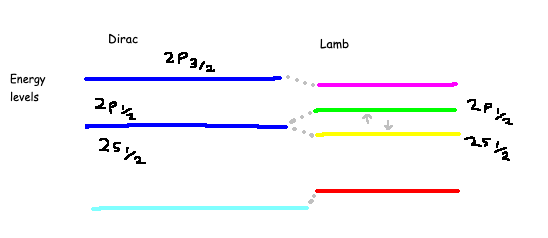
Lamb's measurement identified this energy difference as approximately 1028 MHz, earning him the Nobel Prize in Physics in 1955 for his groundbreaking work related to the Lamb shift.
Section 1.2: Understanding the Lamb Shift through Vacuum Fluctuations
The Lamb shift illustrated that while the Dirac equation was precise, it was also incomplete. The small energy difference hinted at undiscovered physics. Specifically, it failed to consider what we now understand as vacuum fluctuations—minute yet measurable movements in the emptiness surrounding the electron.
In a previous discussion, I explored the Casimir effect, which describes an enigmatic attractive force between two metal plates in a vacuum. This force remained unexplained during Dirac's time but has since been consistently verified through repeated experiments.
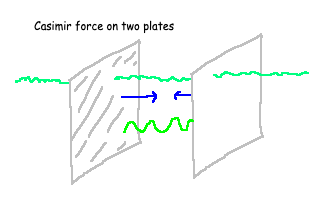
To illustrate, imagine two metal plates placed in a vacuum. The energy between them can theoretically escalate to infinite values because they can store ever-increasing energies. Consequently, we must regularize the mathematics to account for this, allowing us to deduce that certain quantities may appear to emerge from nowhere. One such phenomenon is the Casimir force, which, due to its seemingly spontaneous emergence in a vacuum, is classified as a vacuum fluctuation.
Modern quantum field theory posits that the vacuum itself is an active entity, continuously generating and annihilating tiny particles. Contrary to prior beliefs that vacuums were devoid of activity, the Casimir effect demonstrates otherwise. Instead, we now recognize that minute fluctuations in vacuum space lead to minor corrections in the forces we observe experimentally.
To further clarify, envision empty space where, at random intervals, a particle and its antiparticle appear momentarily, only to annihilate each other almost instantaneously. These fluctuations are proposed to occur incessantly, subtly modifying the quantum forces we measure.
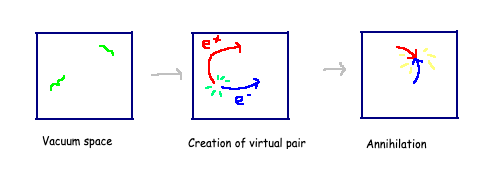
The diagram above illustrates interactions within an electromagnetic field, showcasing a virtual electron and its antiparticle, the positron, briefly coming into existence before annihilating. The following animation provides a visual representation of vacuum fluctuations in quantum chromodynamics, the prevailing theory governing quark interactions.
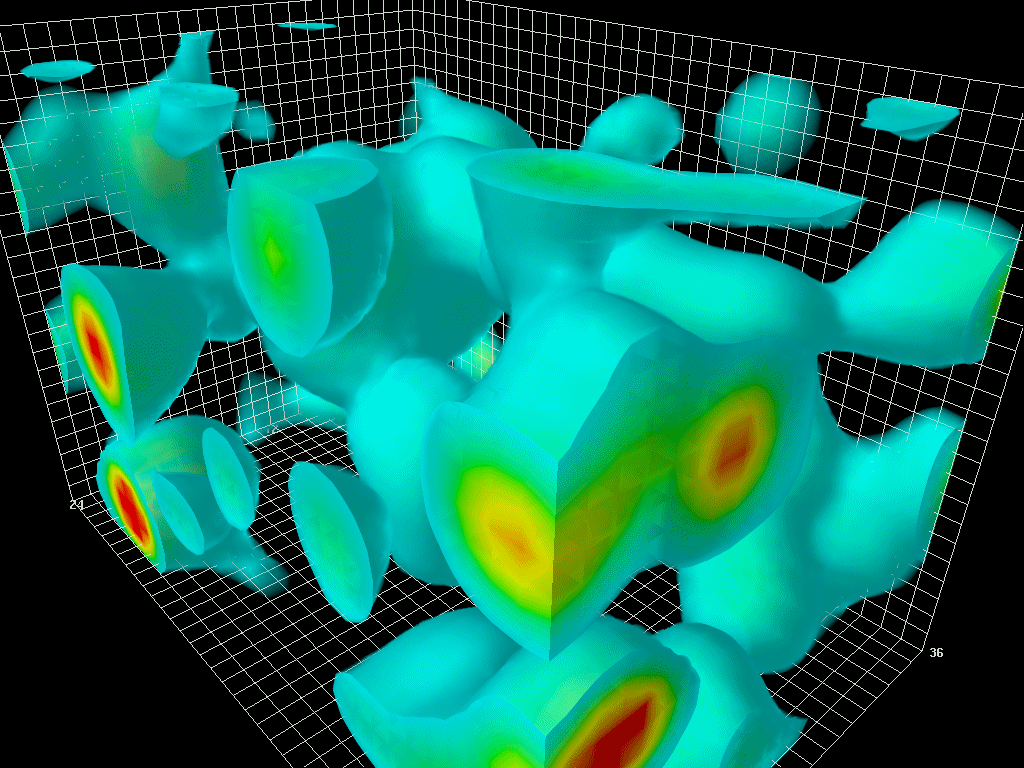
Chapter 2: The Electron's Vacuum Fluctuation
The scenario remains similar for electrons. When an electron is drawn to a proton in the nucleus, the interaction occurs through the electromagnetic force. While Dirac's equation accurately describes this process, it does not account for the vacuum fluctuations that slightly alter the nature of this interaction.
To illustrate, consider two electrons repelling each other. Our leading model of electromagnetism—quantum electrodynamics—depicts forces as being mediated by virtual particles known as virtual photons. When two charged particles interact through electromagnetic forces, they exchange virtual photons, which result in their movement, regardless of whether they attract or repel each other.
To visualize this interaction, we employ Feynman diagrams, as depicted below.
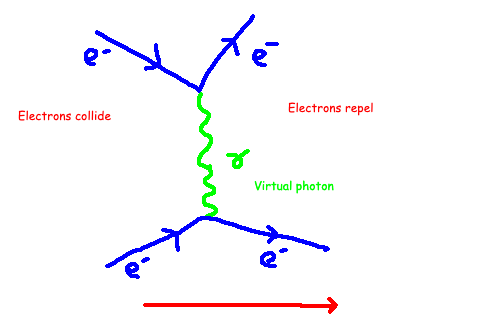
These diagrams are read from left to right. On the left, two negatively charged electrons approach one another. They exchange a virtual photon (shown in green), causing the repulsive force that results in their scattering. Feynman diagrams serve as more than just a helpful visual aid; each aspect corresponds to a set of mathematical principles that physicists utilize to calculate the force's strength and configuration.
While this model does not incorporate vacuum fluctuations, it reproduces results previously established before the Lamb shift. To explain the Lamb shift, we must introduce additional diagrams into our analysis.
Section 2.1: Incorporating Vacuum Fluctuations
Physicists realized that to account for the Lamb shift, it was essential to include vacuum fluctuations. These fluctuations manifest as pairs of particles and antiparticles being generated and annihilated almost instantaneously. The requirement for these pairs ensures that fundamental quantities, such as electric charge, remain conserved.
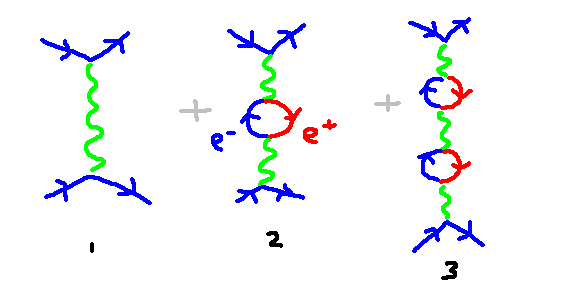
To incorporate vacuum fluctuations, we must consider additional diagrams and processes that contribute to the electromagnetic interactions, as illustrated above. The first diagram represents our previously established model. The subsequent diagrams depict vacuum fluctuations where the exchanged photon temporarily transforms into an electron-positron pair before reverting to a photon, thus propagating the force.
Although these new processes yield only minor effects, they are crucial for accurate predictions. For example, the second diagram illustrates vacuum polarization, with fluctuations resembling the North and South poles of a magnet.
The detailed mathematical terms associated with these diagrams are complex, requiring extensive training in physics and mathematics. However, after rigorous calculations, we discover that the corrected potential bears a striking resemblance to the Coulomb potential, albeit with a minor correction.

This additional correction is termed the Uehling term, and through perturbation theory, we can demonstrate that it accurately predicts the splitting of the energy levels 2S½ and 2P½. The process of extending our standard calculations to encompass these vacuum effects is known as renormalization.
Wrap-up: The Journey Through Quantum Mysteries
I hope this article provided a concise introduction to the intriguing aspects of quantum field theory and the surprising implications of vacuum fluctuations. Stay tuned for more explorations!
The first video delves into Freeman Dyson's insights on the Lamb shift and its pivotal role in theoretical physics.
The second video explores the quantum mechanics of the hydrogen atom and provides further context on the significance of the Lamb shift.